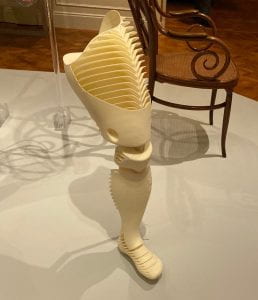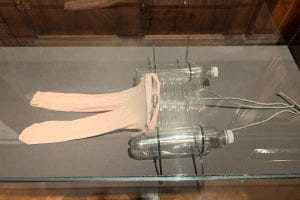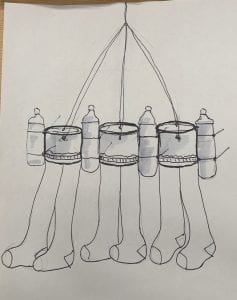Part 1:
1.Prosthetic Leg Prototype (right) 2014
I choose it Because I think this technology provides a lot of convenience for a lot of patients who need it. Without the help of any professional doctor, 3D scanning technology can be used to scan the other leg to create a prosthetic that is very close to the user’s own shape, which is very convenient and personalized
2. Personal Food Computer, 2018-ongoing
I like the personal food computer, because in my hometown Tibet, a lot of vegetation can’t survive because of climate constraints. For example, in my grandmother’s garden, we tried to grow some hibiscus flowers and some melon vegetables but none of them survived due to the weather. However, the MIT personal food computer uses robotic systems to control and monitor climate, energy, and plant growth in specific plantings, which may helps to grow a variety of plants in Tibet.
3. BabyLegs, 2017-19
I like it because the design is smart and simple. The materials and tools are so easy to find that people can make them at home.
Most of the plastic in the world’s oceans is less than 5mm in size, which makes them part of shorelines, underwater environments, waterscapes and even food webs. This makes micro plastics an environmental justice issue, since people who eat Marine mammals or rely on fish for food are more likely to carry a high toxic burden.
I think the BabyLegs shown in the museum is a bit small, which makes it less efficient.
Here is my design:
Part 2:
This interesting plant inspired me, which is Codariocalyx motorius, also known as the telegraph plant, dancing plant. This plant has linear lobules on both sides of each leaf. When the temperature is not lower than 22, especially under the sun, it will dance rapidly according to the oval track and also has sound sense. When a song with a volume of 35-40 decibels or music with a certain rhythm is sounded, it can also dance.The dance grass is an erect small shrub plant, up to 1.5 meters. Stems single or branched, cylindrical, glabrous.
I think this plant is very cute and special, because I feel it is very spiritual, as if it can communicate with human beings. I heard about it several years ago, and I really want to keep a pot, but I didn’t find where to buy it, so I gave up.
I choose man itself to combine both the physical and non-tangible properties of my natural piece. Then I chose the Codariocalyx motorius (https://en.wikipedia.org/wiki/Codariocalyx_motorius)as my nature inspiration, I will focus on it’s dancing ability.
Codariocalyx motorius can dance associated with temperature sunshine acoustic codariocalyx motorius lobular dancing because petiole on either side of the base of sponge tissue with a sensitive response to light at room temperature light and no wind and rain conditions, codariocalyx motorius linear lobule on either side of the blade will keep swinging, every piece of lobular can finish elliptic motion in half a minute time, back to its original position after rotate 180 degrees, and continue to roll, when the sun temperatures began to rise, the plant body moisture to evaporate speed, sponge expansion, lobules are swinging The stronger the light, the faster the movement, until at night all the leaves droop and are closed for sleep. When the sun goes down and the light gets dark, the leaves droop and close and stick to the branches.
What if we applied their biology to a dress that the fabric can dance.
During the day, under normal temperature and bright light and no wind or rain, or when the sun starts to shine and the temperature starts to rise, the dress moves. At night, it can also dance with the sound of 35-40 decibels.




